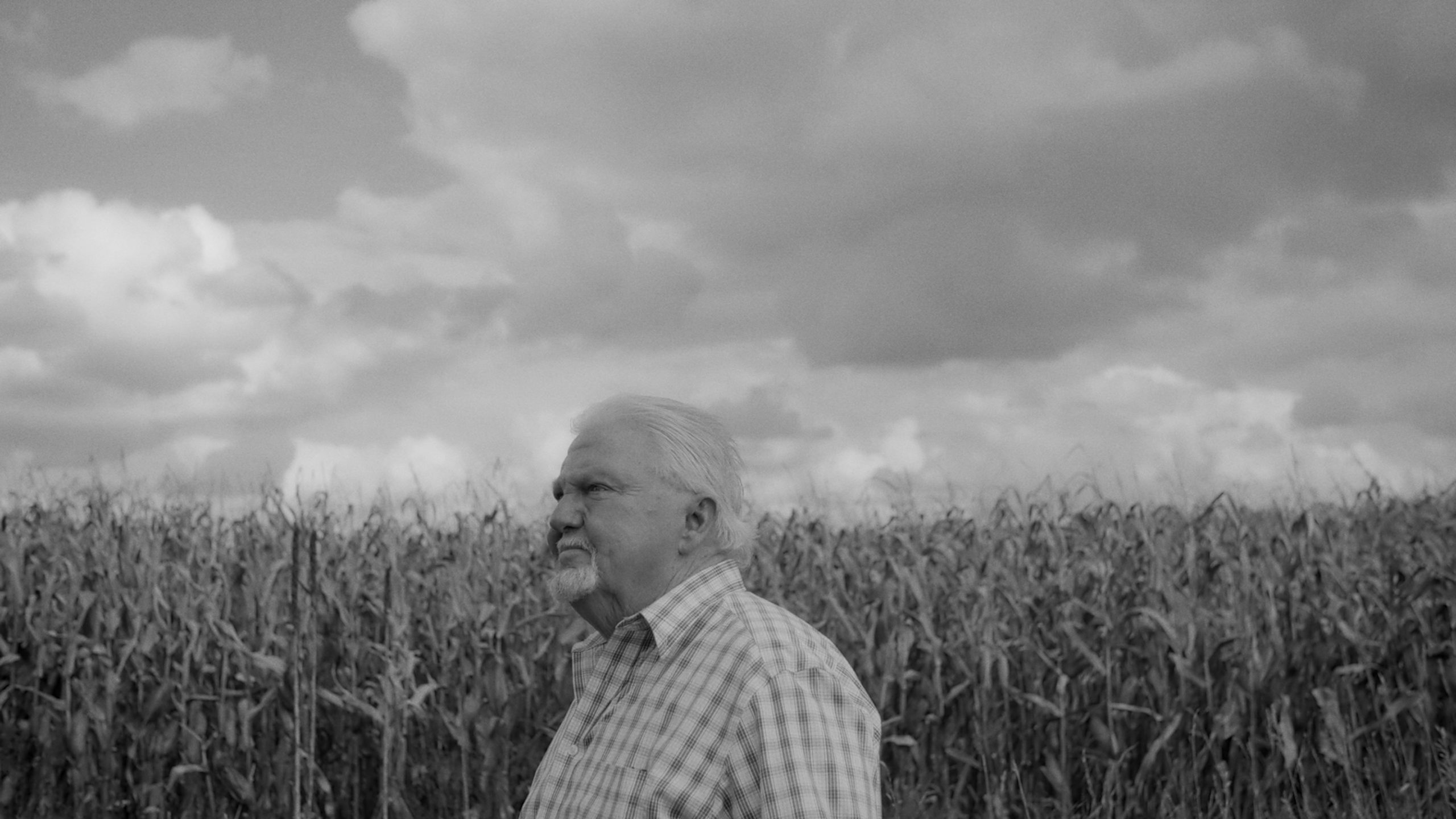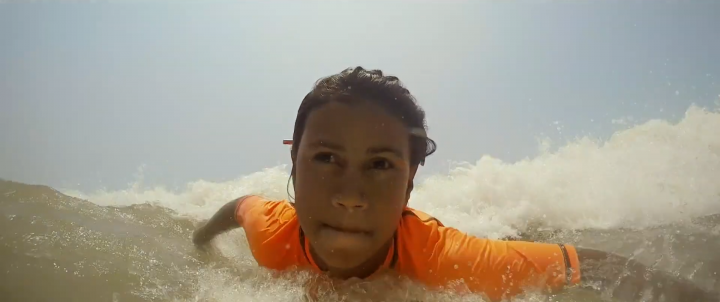For director Jesse McCracken, the road home is bittersweet. His feature Grey Roads, premiering at Hot Docs, offers a frank and poignant reflection of his hometown of Markdale, Ontario. Perhaps best known for the Chapman’s ice cream factory that fills cones nationwide—and where McCracken inevitably worked during his youth, piling boxes as a local rite of passage—Markdale is like many small towns. It houses an aging generation as younger people like McCracken head to the city for opportunities.
McCracken, speaking with POV ahead of Grey Roads’ premiere, says the film emerged from his own desire to leave town. But the pull back home, coupled with his film work, fuelled the doc’s genesis. “As I was getting deeper into the film industry and living in Toronto, I would come back to Markdale and feel an extreme sense of peace and calm,” says McCracken, who was previously at Hot Docs with Motel and the short Steve. “I felt envious of people who had stayed behind and figured things out so much earlier, and had already started families and had a career.” McCracken observes that he found himself at a crossroads considering his choice to leave and some of his peers’ decision to stay.
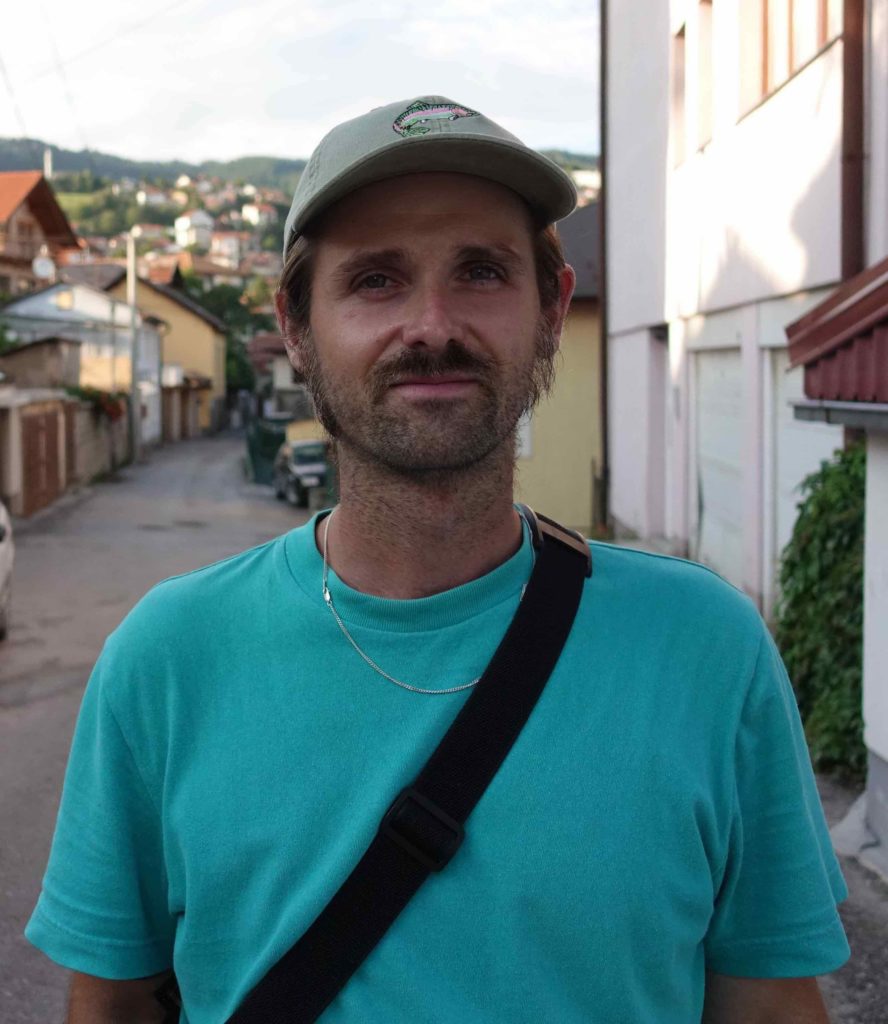
The director recalls seeing the town he recognized vanish with subsequent returns home. He remembers seeing one business close after another as staples from his childhood disappear with news that the school and senior citizens home could be next. Grey Roads adds a further erosion of this sense of stability by situating McCracken’s inquiry amid his parents’ divorce. The film explains how McCracken’s mother left town while his father stayed and felt suffocated for various reasons.
Family Matters
Grey Roads considers the changing nature of Markdale through an intergenerational portrait. McCracken’s father and maternal grandfather are additional eyes through which Grey Roads sees the town in transition. “My grandpa, as you see in the film, likes to consider himself a historian and was happy to walk around and say what used to be here,” explains McCracken. While McCracken’s grandfather is a humorous figure who knows the town in-and-out, his connection to Markdale underscores the loss of the younger generations who’ve seen their peers leave with the town’s dissolution. His father, meanwhile, is a straight shooter who reconsiders his choice to stay. McCracken says the contrast between the men revealed something deeper. “There’s a reason that I’m feeling nostalgia and loss for the town and communities because my dad might be leaving too, now,” observes McCracken.
McCracken says that process inspired him to see his elders as more than compelling vehicles for his portrait of small town life. McCracken says that the decision to gradually add his own voice to the film came from executive producers Hannah Donegan and Ann Shin (director of Hot Docs opener A.rtificial I.mmortality), who suggested a personal approach to accentuate the themes. “This story of three generations of men growing up in a small town was the basis of the film,” says McCracken. “As I was editing throughout the process of filming and showing it to friends and colleagues, their advice was to keep going with this theme.” Instead, his conversations with them fueled a larger consideration of masculinity and the reasons why some elements of social fabric resist change in a changing world.
For example, when Grey Roads introduces Jesse’s father, beer and cigarette in hand, he drops some F-bombs while recalling how he never imagined he’d live to be 30-year-old, let alone see his son hit that age. As he speaks, the film observes some salty surroundings. A Harley Davidson sign reads “Wanted: WOMAN – Must be able to clean, cook, sew leather, tune engines and polish chrome.” The image cuts to a nudie poster, followed by a sign that reads, “NO TRESPASSING. Violators will be shot. Survivors will be shot again.”
McCracken observes his father’s remaining roots in the community by filming him on the road with his motorcycle club the Redneck Riders. The name is partly tongue-in-cheek for the riders who are more bark than bite. (Similarly, McCracken’s grandfather finds his own community in the local rotary club.) The easy riders mostly hit the road together, share some beers, trash talk Toronto, and trade concerns over the influx of immigrant newcomers to Markdale. They’re also organized as a true club with roles, duties, and fundraisers. Nevertheless, the Redneck Riders embody what McCracken’s mother refers to as Markdale’s “written set of rules” as a “community of men” during a phone call that appears late in the film. Her matter-of-fact observation makes clear why both she and her mother left town.
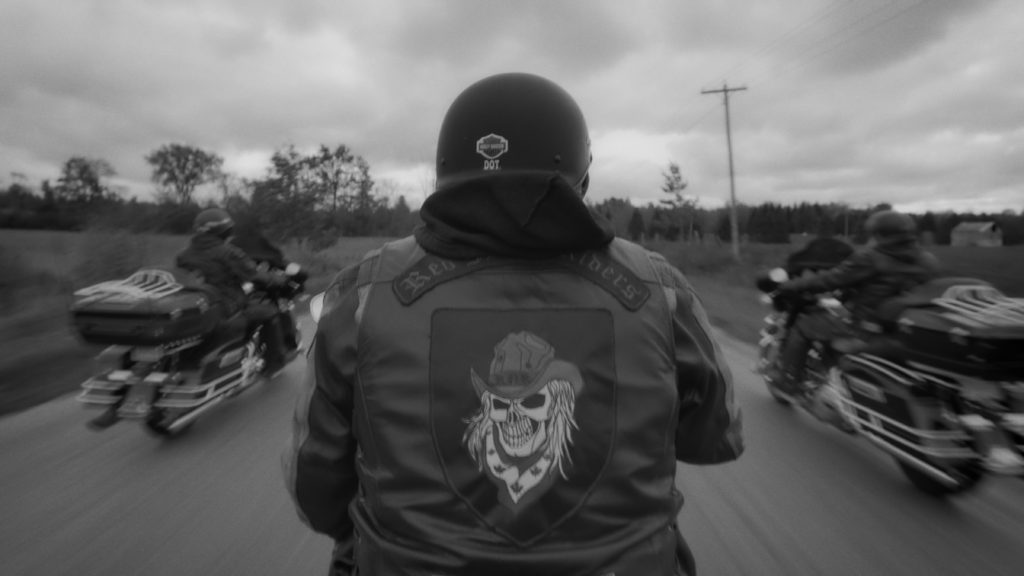
Measure of a Man
If the men and Markdale seem like products of another era, McCracken’s crisp black and white cinematography sombrely evokes the past. Images alternate between ruminative takes driving down the open road as snow billows across the lanes and between relatively static shots of the town’s thoroughfare as shops and restaurants border vacant streets. “Markdale feels timeless. You can look down Main Street and it feels like you’re looking at one of the old photographs I show in the film,” observes McCracken. Early scenes have a hint of nostalgia—more melancholic than romantic—as McCracken’s grandfather tours the town and the contemporary footage is virtually indistinguishable from the archives, save for the lack of human activity.
The nostalgic tone yields to something more plaintive as the film progresses. “I thought it could give the audience a sense that an image can look timeless, but that doesn’t mean that it has to be set via a certain standard.” Grey Roads has echoes of classic westerns as the town patriarchs embody the strong silent type of men like John Wayne, Clint Eastwood, or Henry Fonda. Orchestral cues evoke Ennio Morricone’s approach to lawless gunslingers.
McCracken explains that he shot the film himself, in part from a practical perspective and partly due to the personal nature of the images, like the snowy streets that set the rhythm of the film. Moreover, McCracken says that pulling double duty as director and DP helped create the comfortable space that invited his father and grandfather to be vulnerable. “I think they struggled with it at different points, probably in the beginning,” admits McCracken. “I’m sure they thought it was intense, but they rolled with me, and I’m so proud of them for what they were able to share with me and with the audience.” McCracken’s father especially lets the wall he built around himself dissolve as the film progresses. “I just tried to keep telling them that they can speak about their experience so that other men in rural communities can be more open and receptive.”
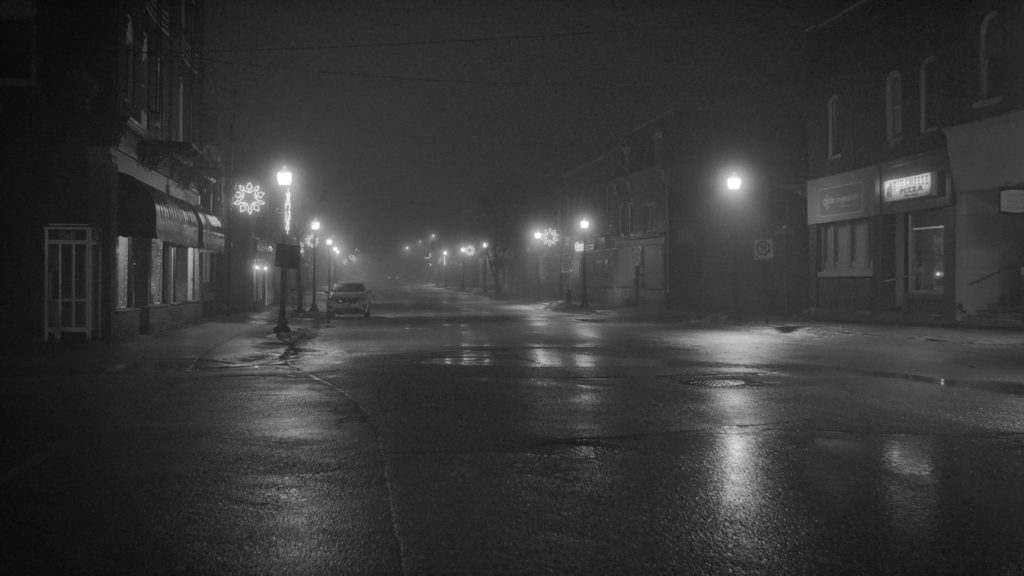
Framed Anew
The film invites audiences to consider the men in a different light when McCracken, who is also a photographer, takes group portraits of the Redneck Riders while his father reflects on the old days when the gang could raise enough funds to buy the town a new Zamboni. Exquisitely composed 120mm still frames punctuate the footage and break down the riders’ tough veneer. The colours of the photography—signalled humorously by McCracken’s direction to one rider to hide his bright orange boots from sight—contrast sharply with the old-school verité seen seconds before. “These men can be timeless characters from the ’60s, but then you see them in this medium and in really incredible detail in colour,” observes McCracken. “It felt like a moment to put the audience into the modern world. It feels timeless, but at the same time, we have to challenge ourselves and realize that this story is still in the present.”
Grey Roads doesn’t endorse the views or lifestyles of the men it observes. Rather, as McCracken captures the men on the road, riding freely in their boots and bomber jackets, it evokes images from another era. These are men whose definition of masculinity exists in a reality that doesn’t jibe outside their bubble. McCracken says that the mere act of the men’s participation in the film, however, is progress. “My dad can come across as gruff and brash and intense, but he is open to talking about problems and recognizing problems within his community,” notes McCracken. “You can tell that they are changing when they’re willing to talk about where their coping mechanisms came from and where the alcoholism in small towns comes from.” Similarly, his grandfather introduces him to members of the younger generation who carry his own sense of optimism for Markdale’s future.
For McCracken, navigating small town life in Markdale versus the rat race in Toronto brings different rewards. “Markdale has a sense of calm, peace, simplicity, and a slower pace in a world that’s become increasingly faster and overstimulating and over competitive,” observes McCracken. “That’s how I feel in Toronto. I feel like I’m swamped by the pressures of being in the film industry in the city, and getting on to the next project.” Grey Roads leaves one wondering where the road will end as the next generation finds itself struggling to afford city life, but unable to leave. Grey Roads leaves audiences at the crossroads. Where one goes next is a matter of perspective.
Hot Docs runs April 29 to May 9.




